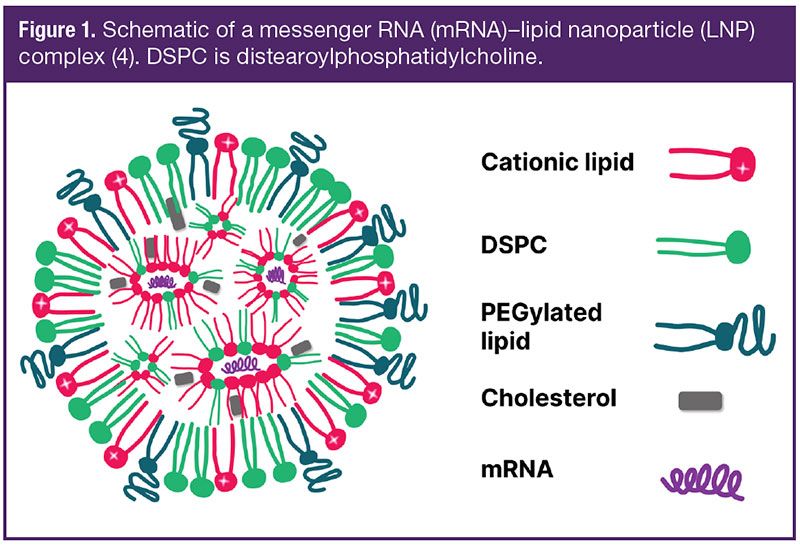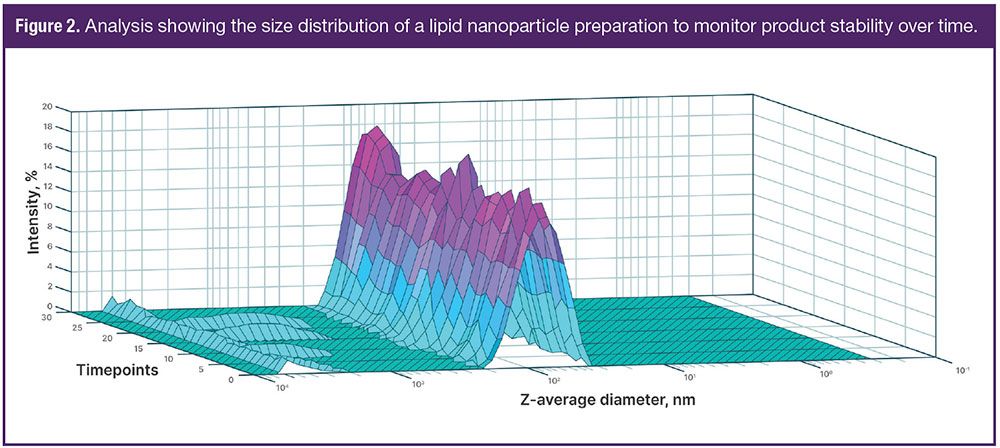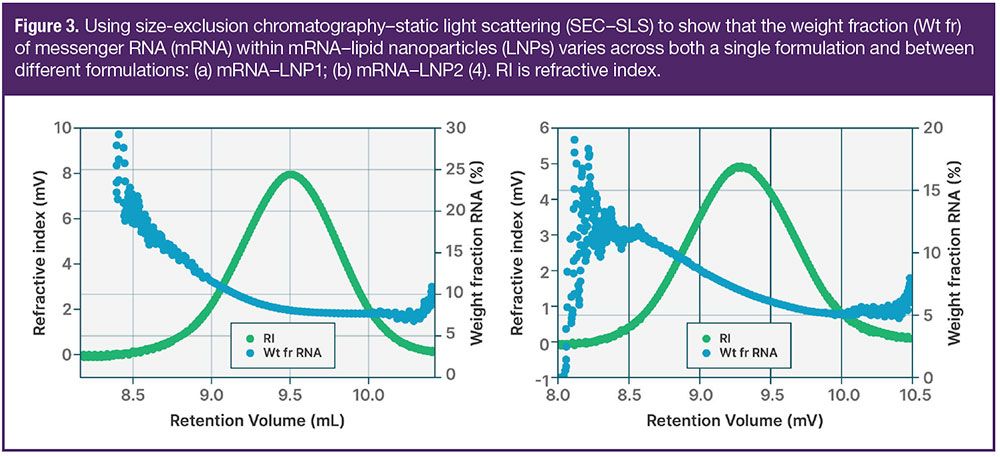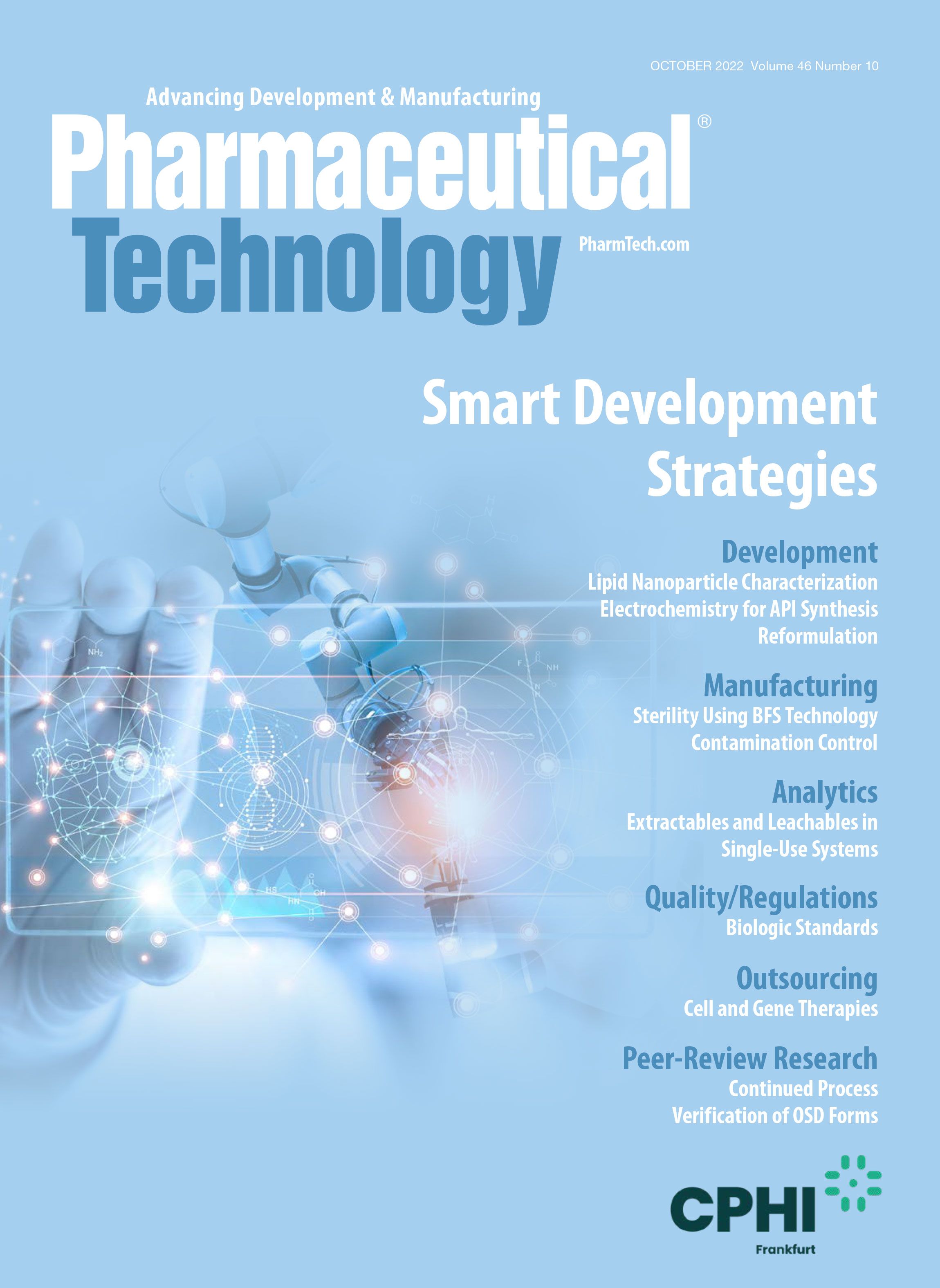Shining a Light on Lipid Nanoparticle Characterization
Using an orthogonal approach to lipid nanoparticle analysis can increase the odds of project success.
Likanaris/stock.adobe.com

The importance of messenger RNA (mRNA)-based vaccines and therapies in global healthcare is growing, spurred on by the success of Moderna’s Spikevax and Pfizer–BioNTech’s Comirnaty COVID-19 vaccines. Such efforts towards precision medicine, however, come with the challenge of increasing complexity (e.g., compared to small-molecule drugs). This complexity demands drug developers and manufacturers use the right analytical tools to fully understand their products.
Nowhere is this complexity more evident than in the lipid nanoparticles (LNPs) used to encapsulate fragile mRNA cargo. Size, composition, aggregation, surface charge, and structure of LNPs can all have significant effects on a therapeutic molecule’s success; and optimizing one property may come at the detriment of another. These interdependent characteristics can impact stability during production, transport, and storage, or affect the delivery and release of the drug product in target tissues.
Challenges of LNP characterization
Unlike small-molecule drugs or protein therapeutics, which are chemically or biologically synthesized, LNPs self-assemble during the mixing of their component ingredients. These components can include cationic lipids, helper lipids such as distearoylphosphatidylcholine (DSPC), sterols such as cholesterol, and polyethylene glycol-containing (i.e., PEGylated) lipids (Figure 1). To ensure drug formulators achieve their final product, they must optimize the ratios of these ingredients and perfect the way in which these ingredients are mixed.
All figures are courtesy of the authors. Figure 1. Schematic of a messenger RNA (mRNA)–lipid nanoparticle (LNP) complex (4). DSPC is distearoylphosphatidylcholine.

Small batch-to-batch differences in mixing can result in products that have significantly different compositions. Similarly, changes in ingredient flow rates can alter the size of the final product. For example, faster flow rates produce smaller LNPs than slower ones. Throughout process development and optimization, drug manufacturers need to confirm they are producing LNPs consistently and to specification.
Particle size is critical because it has implications for drug function. Particles that are too small may be cleared from the bloodstream by the kidneys before they can take effect, whereas larger or aggregated particles may fail to penetrate cells or could induce unwanted immune responses. Thus, drug developers need to ensure that the LNPs they are producing are the optimal size and that the size distribution (polydispersity) falls within acceptable parameters. Unexpected changes in size or polydispersity could signal problems in manufacturing processes or product degradation.
Another factor crucial to the success of an LNP is stability. Solvents used during production may need to be removed before administering the product to patients. Drug developers, therefore, need to be sure that the product created remains stable in the solvent’s absence. They also need to know that the product holds its structure during transport and storage.
Drug developers must also ensure that LNPs maintain their structure and successfully protect their mRNA cargo until the therapeutic is delivered to the target site in the patient’s body. As such, scientists must analyze LNP performance under conditions that mimic the bloodstream or target tissues as well as inter- and intracellular environments.
The surface charge is another critical factor that dictates how well an LNP functions within the body. For example, while LNPs with a positive charge have been investigated, they can trigger inflammatory responses, inducing problems such as hepatotoxicity (1). Negatively-charged LNPs avoid these toxicity issues; however, this is not the only place where the charge is important. LNPs need to respond to changes in the endosomal pH, often by changing charge, which can influence the endosomal escape of their mRNA payload.
Expanding the use of LNPs from intramuscular injections for vaccines to other applications such as cancer vaccines or gene therapies, in which the LNPs need to enter other cell types, the surface charge can impact the uptake of the LNPs to different cell types (2). Thus, formulators need to monitor surface charge to identify LNPs that can access the target cells. It can also be informative to understand how this surface charge varies across relevant pH ranges.
Techniques proven to meet the challenge
With such a complex range of attributes to navigate, developers must use complementary analytical technologies to provide a full understanding of LNPs. Fortunately, they don’t need to develop these methods de novo. Rather, LNP specialists can tap into the well-established field of lipid-based drug characterization, where proven analytical technologies have long helped ensure product quality and function.
Size matters
To monitor LNP size and sample polydispersity, LNP specialists can rely on dynamic light scattering (DLS)—whether single-angle or multi-angle (MADLS)—and nanoparticle tracking analysis (NTA). Using these methods, LNPs in suspension scatter laser light as they diffuse through a sample. Changes in the scattering pattern are translated to particle size and size distribution, with larger particles diffusing more slowly than smaller particles.
DLS offers the lowest resolution of particle size determination but gives a good indication of the size of LNPs in a sample. Using back, side, and forward detection angles, MADLS offers a higher resolution than DLS, allowing it to identify additional populations of LNPs that DLS might miss. NTA offers even higher resolution but often requires sample dilution, which can perturb LNP stability. The choice between these complementary techniques depends on factors, such as LNP size and polydispersity, sample heterogeneity, and the questions being asked.
When Pfizer–BioNTech contracted PolymunScientific to scale up the process of producing LNPs for the Comirnaty program, Polymun needed to develop
robust manufacturing processes to support large-scale production (3). Key to this development were analytical methods, including those described in this article, to guide process development and control manufacturing processes. Such efforts allowed the company to confirm batch-to-batch consistency and long-term stability of its liposomal and LNP formulations (Figure 2).
Figure 2. Analysis showing the size distribution of a lipid nanoparticle preparation to monitor product stability over time.

MADLS and NTA also offer the opportunity to determine particle concentration, which provides quick information on process yield and any potential losses from process steps. Recently, researchers applied these methods to liposome samples and showed that the accessible concentration range for MADLS (108 to 1012 particles/mL) overlapped with and extended that for NTA (107 to 109) (Figure 3). MADLS offered a similar range when the method was applied to LNPs.
Figure 3. Using size-exclusion chromatography–static light scattering (SEC–SLS) to show that the weight fraction (Wt fr) of messenger RNA (mRNA) within mRNA–lipid nanoparticles (LNPs) varies across both a single formulation and between different formulations: (a) mRNA–LNP1; (b) mRNA–LNP2 (4). RI is refractive index.

Taking charge
As pH can differ significantly between production and storage conditions as well as physiological environments, it is vital to monitor surface charge throughout the product’s life cycle. Electrophoretic light scattering (ELS) is a powerful tool that can determine the apparent charge of a particle in different conditions; for example, mimicking a pH range from slightly alkaline blood to the acidic endosome. The obtained surface charge measurements allow developers to balance the needs of product development and long-term storage with the requirements for clinical efficacy, optimizing cellular delivery while minimizing toxicity risks.
The heat of the moment
Production, storage, and application add temperature stresses to LNPs, which can be investigated using DLS thermal ramp experiments or differential scanning calorimetry (DSC). Thermal ramps use DLS to monitor particle stability over a temperature range, while DSC measures heat uptake or release linked to structural transitions or changes in molecular interactions.
Drug developers can use these methods to examine the thermal stability of both the LNP delivery vehicle and its mRNA cargo. Such information is critical during LNP formulation as developers optimize ingredient combinations to improve stability without negatively impacting efficacy. Furthermore, as the DSC thermogram is also a fingerprint of mRNA and LNP’s higher-order structure, companies can use it to inform the selection of mRNA sequence variants during design stages and to compare different formulations and batches of the LNP product. This detailed characterization helps support intellectual property protection.
A rapid look at composition
A method commonly used to monitor particle size and polydispersity is size-exclusion chromatography (SEC) coupled to static light scattering (SLS) or another detection system. But beyond questions of particle size, developers continue to evolve the applications of SEC–SLS to help answer questions about LNP composition, monitoring not only the lipid complexes but also the mRNA cargo. For example, researchers used SEC–SLS to perform compositional analysis of two mRNA–LNPs (4). Monitoring the concentrations of the mRNA and LNPs across the entire particle distribution, the researchers could determine the relative weight fractions of the components—a measure of therapeutic payload. In both mRNA–LNPs tested, the scientists observed variation in mRNA loading across the population.
SEC–SLS offers analytical insights in minutes, accelerating throughput across development and manufacturing. The analysis also eliminates the need for multiple analytical steps and fluorescent reagents and reduces operator impact on measurement consistency. Although still relatively new to LNP manufacture, compositional analysis has proven vital to other medical applications, such as studies of viral vectors in gene therapy, antibody-drug conjugates, and antibody aggregation.
The power of orthogonal approaches
In the complex world of mRNA-based vaccines and therapies, tried and tested analytical technologies, such as DLS/MADLS, NTA, and ELS, are shining a light on the LNPs that help those medicines survive the journey from lab to factory to cellular site-of-action. Researchers are further augmenting those insights by evolving and expanding the applications of DSC and SEC–SLS to build further a more reliable picture of LNP attributes, improving the chances for project success.
Although individual biophysical characterization techniques provide valuable insights into the nature of LNPs, no single technology can provide a complete picture. Instead, orthogonal and complementary approaches are needed to provide a more comprehensive understanding of the critical quality attributes that define product quality, consistency, and, ultimately, efficacy (Table I).
Table I. Proven analytical technologies monitor a range of lipid nanoparticle attributes (4). DLS is dynamic light scattering. MADLS is multi-angle light scattering. NTA is nanoparticle tracking analysis. ELS is electrophoretic light scattering. SEC–SLS is size-exclusion chromatography–static light scattering. DSC is differential scanning calorimetry.

This prospect may be daunting if a company is unfamiliar with some of these techniques. The broad expertise of an analytical partner can, therefore, help in the development of the applications needed to achieve a deeper understanding of LNPs.
References
1. R. Kedmi, N. Ben-Arie, and D. Peer, Biomaterials 31 (26) 6867–6875 (2010).
2. R. Pattipeiluhu, et al., Advanced Materials 34, 2201095 (2022).
3. Malvern Panalytical, Developing an Analytical Workflow for Nanomedicine and 3rd Generation Vaccine Production at Scale, Whitepaper (2022).
4. N. Markova, et al., Vaccines 10, 49 (2022).
About the authors
Hanna Jankevics Jones, PhD, and Natalia Markova, PhD, are pharmaceutical segment marketing managers at Malvern Panalytical.
Article details
Pharmaceutical Technology
Volume 46, Number 10
October 2022
Pages: 20–23
Citation
When referring to this article, please cite it as H. Jankevics Jones and N. Markova, "The Value of Primary Working Standards in Pharmaceutical Quality Control," Pharmaceutical Technology 46 (10) 20–23 (2022).

Drug Solutions Podcast: A Closer Look at mRNA in Oncology and Vaccines
April 30th 2024In this episode fo the Drug Solutions Podcast, etherna’s vice-president of Technology and Innovation, Stefaan De Koker, discusses the merits and challenges of using mRNA as the foundation for therapeutics in oncology as well as for vaccines.
Drug Solutions Podcast: Applying Appropriate Analytics to Drug Development
March 26th 2024In this episode of the Drug Solutions Podcast, Jan Bekker, Vice President of Business Development, Commercial and Technical Operations at BioCina, discusses the latest analytical tools and their applications in the drug development market.